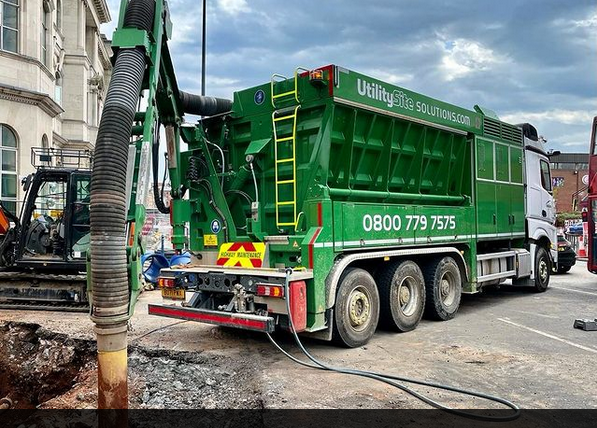Introduction
Beneath the surface of construction and infrastructure projects lies a world of buried utilities, pipelines, and cables that are vital to the functioning of our modern society. However, the process of uncovering these underground assets can be a risky endeavor, often involving heavy machinery and the potential for damage. In recent years, a revolutionary method known as vac excavation has emerged as a safer and more efficient way to unearth buried utilities. This article explores the power of vacuum excavation, its benefits, applications, and its role in enhancing safety and precision in construction and utility management.

The Essence of Vacuum Excavation
Vacuum excavation, often referred to as "soft digging" or "hydro-vacuum excavation," is a non-destructive digging technique that employs a combination of high-pressure water and powerful suction to remove soil and debris from around buried utilities. This approach significantly reduces the risk of damaging underground infrastructure and is increasingly being recognized as a game-changer in the construction and utility industries.
The Process: Vacuum excavation involves the use of a specialized truck-mounted unit that blasts pressurized water into the ground, breaking up soil and creating a slurry. Simultaneously, a strong vacuum removes the slurry, exposing the buried utility with minimal impact on the asset.
Safe Unearthing: Traditional digging methods, such as using backhoes or excavators, can inadvertently lead to damage or ruptures of underground utilities, resulting in costly repairs, service disruptions, and potential safety hazards. Vacuum excavation's gentle approach minimizes these risks.
Benefits of Vacuum Excavation
The rise of vacuum excavation is not without reason – its advantages extend beyond safety and encompass several critical aspects of modern construction and utility management.
Precision and Accuracy: By removing soil in a controlled manner, vacuum excavation allows workers to precisely expose utilities without the risk of accidental damage. This level of accuracy is especially valuable in crowded urban environments with dense utility networks.
Reduced Disruption: When conducting maintenance or repair work on underground assets, vacuum excavation ensures minimal disruption to surrounding areas. This is particularly advantageous for high-traffic urban spaces and areas with sensitive ecosystems.
Time and Cost Efficiency: Vacuum excavation can expedite the digging process, leading to reduced labor costs and shorter project timelines. Moreover, the avoidance of costly repairs due to damaged utilities adds to the cost-effectiveness of this method.
Enhanced Safety: Vacuum excavation significantly reduces the chances of accidents and injuries that can occur with traditional digging methods. This prioritization of worker safety contributes to a healthier work environment.
Applications of Vacuum Excavation
The versatility of vacuum excavation extends its applications to a wide range of industries and scenarios.
Construction: From laying new pipelines to building foundations, vacuum excavation aids in site preparation while safeguarding existing utilities.
Utility Management: Routine maintenance and repair of water, gas, electricity, and telecommunications infrastructure benefit from the precision of vacuum excavation.
Environmental Projects: When dealing with contaminated soil or fragile ecosystems, vacuum excavation minimizes disturbances while allowing for necessary investigations.
Archaeological Digs: Vacuum excavation is also finding use in archaeological excavations, where delicate handling of soil is crucial for preserving artifacts.
Challenges and Considerations
While vacuum excavation offers numerous benefits, there are certain challenges and considerations to keep in mind:
Soil Types: Different soil types may require adjustments to the vacuum excavation process. Hard, compacted soils may necessitate higher pressure water jets.
Training: Proper training is essential to ensure operators understand the intricacies of the equipment and the excavation process to maximize safety and efficiency.
Water Management: The use of water in vacuum excavation raises concerns about water conservation and proper disposal of the slurry.
Conclusion
As construction and utility management continue to evolve, so do the methods and technologies used to uncover buried assets. Vacuum excavation represents a significant leap forward in this regard, offering a safer, more accurate, and less disruptive way to dig beneath the surface. By prioritizing precision, efficiency, and worker safety, vacuum excavation is transforming how industries approach projects that involve working below ground. As this technique gains traction and evolves further, it holds the potential to redefine the way we interact with the hidden infrastructure that underpins our modern world.

No comments yet